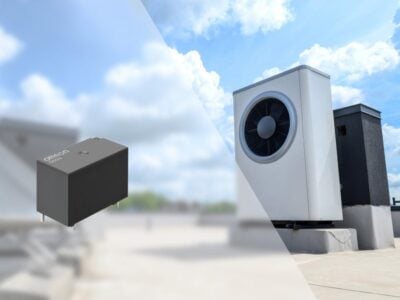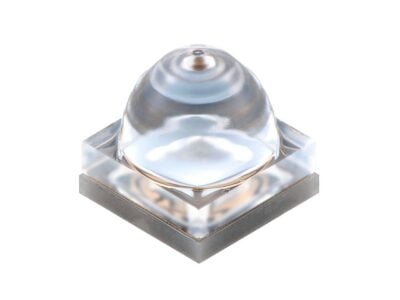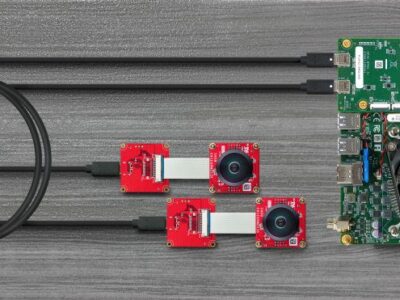Digital advanced bus converter offers high performance with low power consumption
The Ericsson BMR456 3E Advanced Bus Converter claims to deliver unprecedented performance to system architects who are developing equipment for ICT (Information and Communication Technology) applications that require fast response time, tightly regulated intermediate bus voltages and high efficiency at any point of operation to reduce power consumption.
The new generation of fully regulated digital DC/DC converters is based on a 32-bit ARM microcontroller that embeds the family’s most advanced firmware to date. The FRIDA II firmware has been developed by Ericsson to guarantee the highest possible performance at any point of operation from low load to high load, and to handle line transients, such as those occurring in ATCA (Advanced Telecommunications Computing Architecture) applications when, for example, switching from Feed A to Feed B.
Patrick Le Fèvre, Marketing and Communication Director, Ericsson Power Modules, commented: “The BMR456 is the first product to be based on the FRIDA II platform and firmware and is the culmination of technology innovation that demonstrates Ericsson’s firm commitment to reduce energy consumption.”
Designed to power telecom and datacom applications, the BRM456 is available in two input voltages ranges: 36 V to 75 V, delivering output power of 420 W; and 40 V to 60 V, delivering output power up to 468 W. Output voltage can be adjusted across a range from 4.0 V to 13.2 V via PMBus commands, making the BMR456 suitable for Dynamic Bus Voltage operation resulting in the reduction of energy consumption when communication data traffic is low.
In addition, taking full advantage of optimized layout and firmware-optimized parameter switching to reduce power losses, the BMR456 delivers a typical efficiency of 96.5% and exhibits flat curve behavior from 14% to 100% load, positioning the product as the most efficient Advanced Bus Converter in its category. Designed for flexibility and high-power applications, when connected in parallel, the Droop Load Sharing (DLS) version of the BMR456 telecom (36-75 V) and datacom (40-60 V) versions can deliver 756 W and 842 W, respectively.
The BMR456 implements the FRIDA II firmware, which is an ‘Energy Performance Optimizer’ that combines advanced Ericsson Intellectual Property (IP) together with a series of industry-first functionalities to continually optimize switching parameters and reduce energy consumption to an absolute minimum. The firmware is not just limited to energy management, but includes an enviable number of features including the ability to handle input voltage transients with slew-rates of up to 0.5 V/µs, while keeping the output voltage within ±10% and ensuring that the output voltage does not trigger over-voltage protection. It also offers the highly efficient management of pre-bias start-up operation and a fully controlled shutdown process, avoiding voltage spikes that could cause an avalanche condition in the secondary-side synchronous rectification MOSFET, thereby contributing to improved reliability.
Designed to be fully integrated and optimized in the energy optimization chain, the BMR456 includes a USER_STORE memory block, which can be used by system designers to store their own customized configuration files to profile BMR456 behavior to match certain conditions. This level of functionality, combined with PMBus control, offers a very high degree of flexibility to deliver the appropriate amount of energy when required by the load, avoiding unnecessary power losses.
In addition, in a parallel development, Ericsson has introduced a new power-train and embedded transformer layout, which when combined with the FRIDA II firmware provide end users with a fully regulated output voltage across the overall operation range from 36 V to 75 V and without ‘grey zones’ below 40 V. This industry-first combination guarantees that systems architects will always obtain the power their application requires without having to be concerned about unregulated behavior.
The BMR456 meets the insulation requirements of EN60950, sustains an I/O isolation voltage of 2250 VDC, and also offers an extensive set of capabilities and features such as: remote sensing; PMBus-configurable protection (over-temperature, over-current and over-voltage); configurable start/stop; precision delay ramp-up; voltage margining; configurable fault response; power good; and extensive power management programmability.
The BRM456 is fully backward compatible with Ericsson’s previous generation of Advanced Bus Converters. The device’s I/O connector has been designed to guarantee full alignment and co-planarity using different soldering processes for both through-hole and surface-mount assembly. In addition to the mechanical benefits, the Ericsson Advanced Bus Converter footprint offers the necessary flexibility for further board design evolution and the addition of new features currently under evaluation within the ICT industry.
Additionally, to assist in the design process, a system development board – called the ROA1283835 – is available, offering designers the ability to connect to other Ericsson 3E development boards that host digitally controlled 3E Point-of-Load (POL) converters and to create a complete solution prior to implementation in the final application.
Visit Ericsson Power Modules at www.ericsson.com/powermodules
 If you enjoyed this article, you will like the following ones: don't miss them by subscribing to :
eeNews on Google News
If you enjoyed this article, you will like the following ones: don't miss them by subscribing to :
eeNews on Google News



